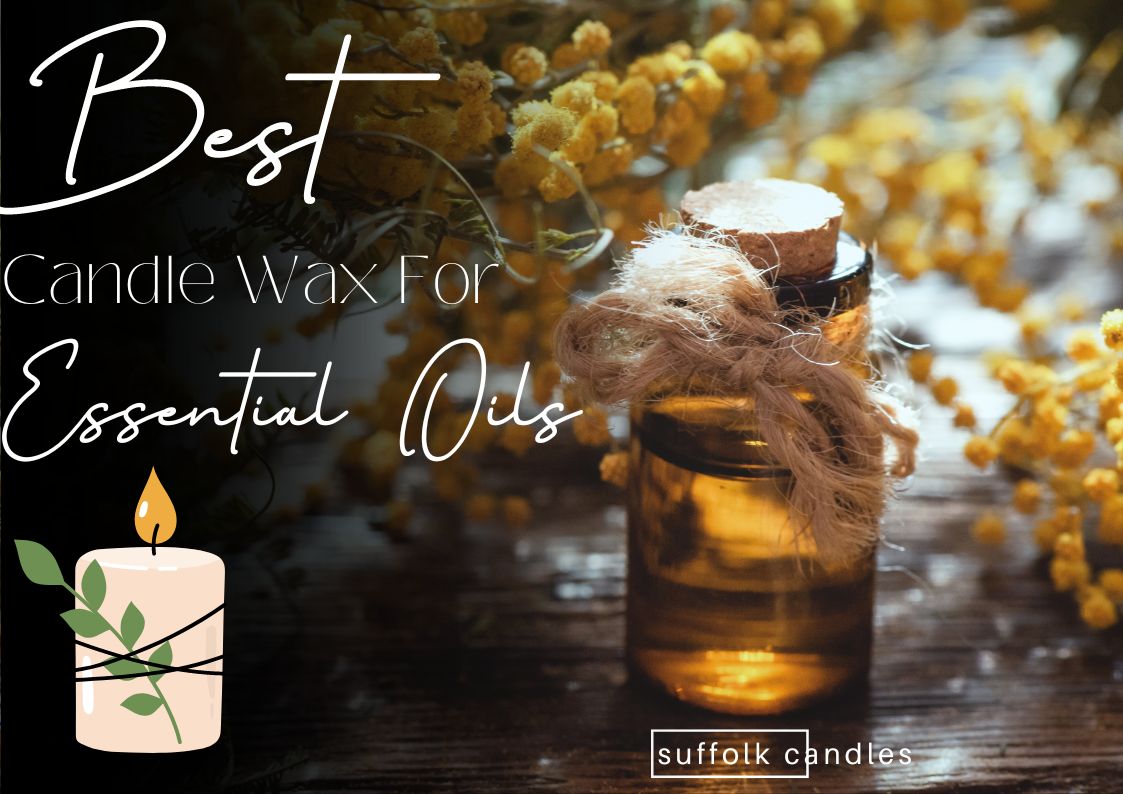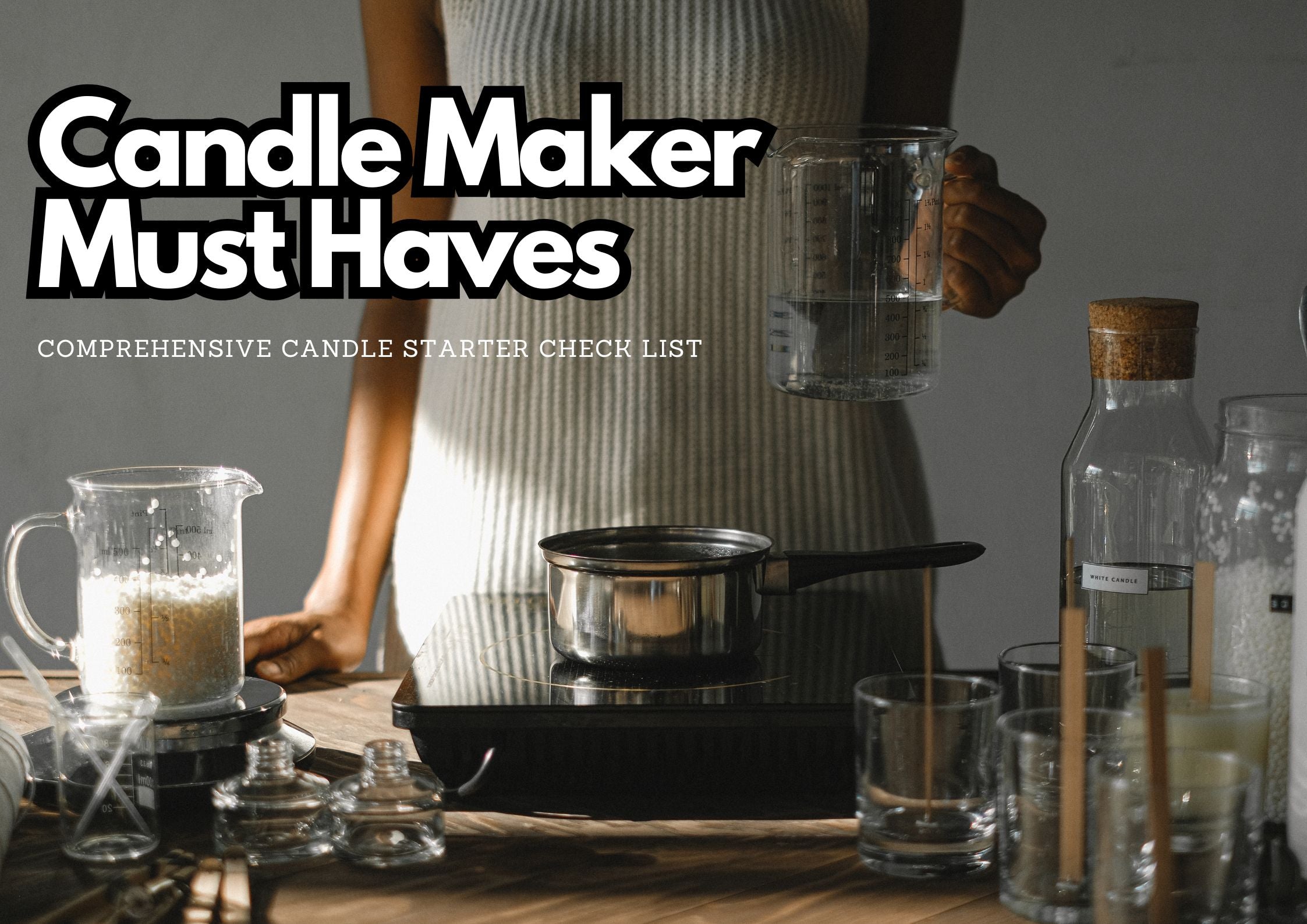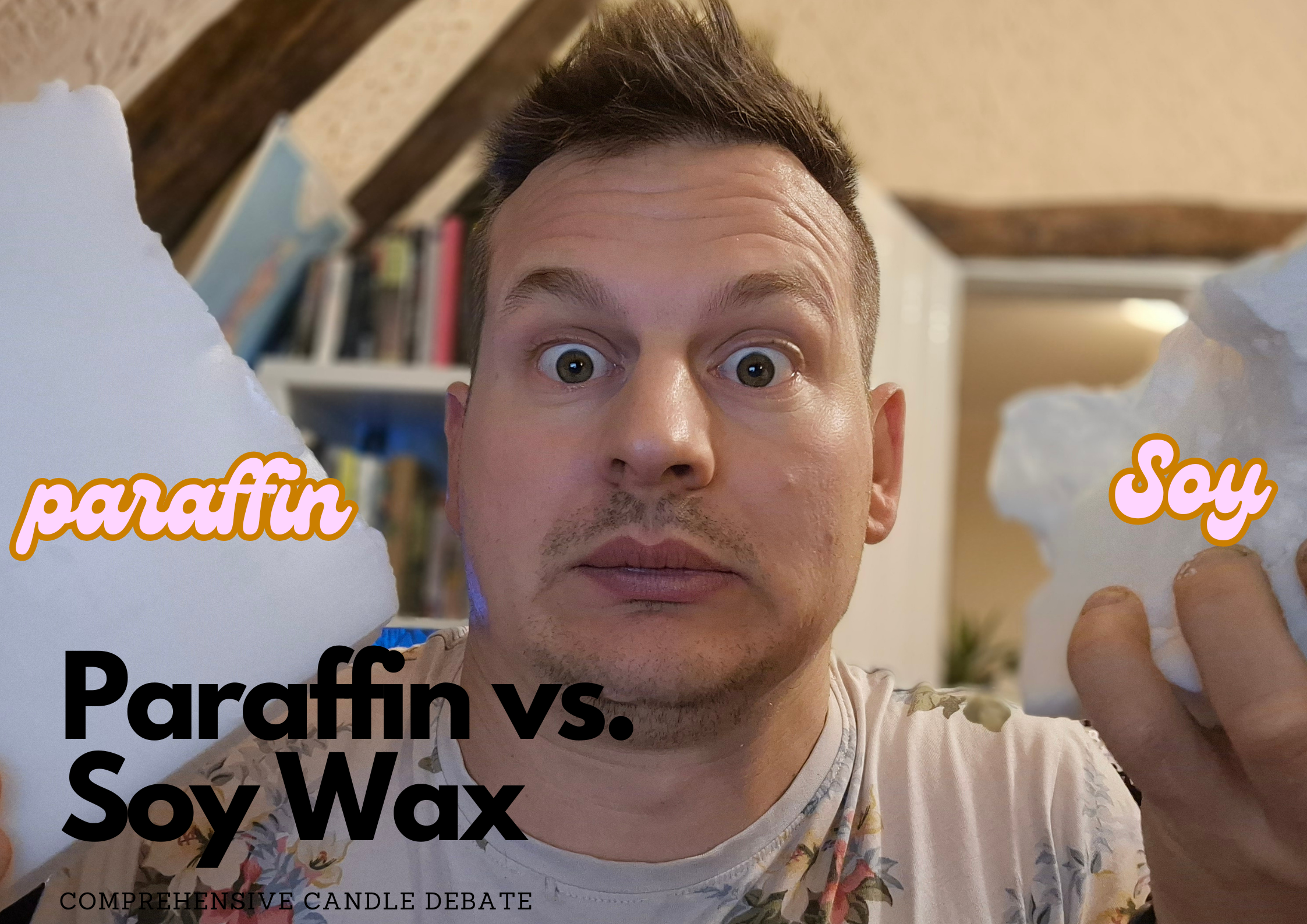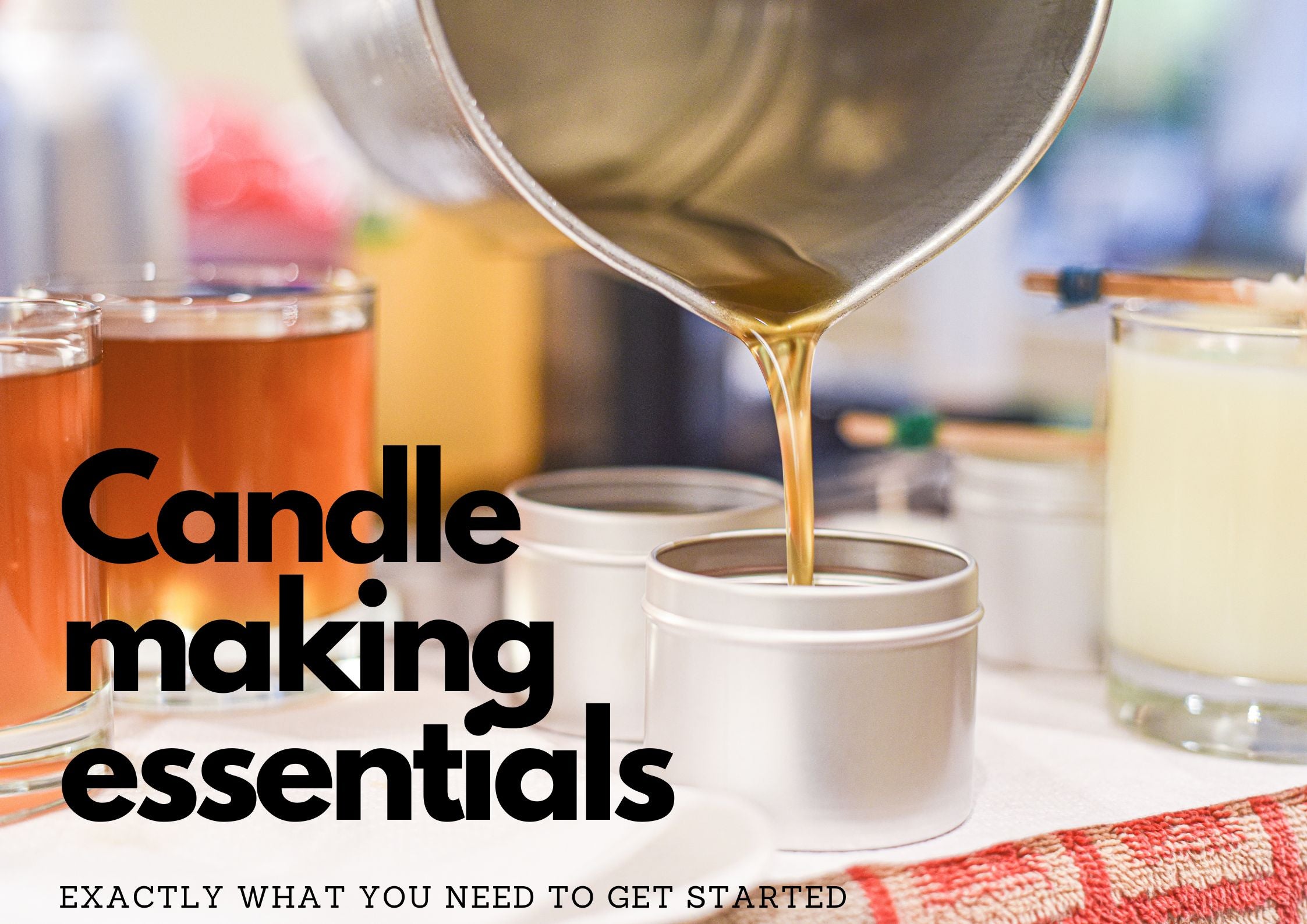Best Candle Wax For Essential Oils
Feb 27 , 2023
Best Candle Wax For Essential Oils

Have you ever wanted to use essential oils for aromatherapy candles but weren’t sure what type of wax was best? Well, today is your lucky day! This article will provide an in-depth analysis into different of wax and which ones are most suitable for blending with essential oils.
We all strive for a high quality product when we make our own candles and by choosing the right wax it can ensure that you get great results every time. Through this article, you can learn the different properties each type of candle wax has as well as how they interact with essential oils, so you can choose the one that suits your needs best.
By the end of this article, not only will you have a better understanding of what makes a good blend between wax and essential oil but also be able to create your own beautiful scented creations at home. So let's dive right in and explore all the options available to us!
If you're interesting in candle making checking out our full and in-depth article on handmade candles for beginners, where we cover the basics, wicks, candle wax, pure essential oils and how to perfectly craft your own scented candles.
Why Essential Oils Make Good Candles
Essential oils are a unique type of natural oil that can make for great candles. Their natural fragrances, therapeutic properties makes them an attractive choice for candle makers. In addition to this, using essential oils in candles means the wax will be naturally scented without any synthetic additives or potentially harmful chemicals. Which is an added bonus, one of which a lot of customers are looking for these days (that's if you want to sell them).
Another advantage of using pure essential oils is the versatility they offer when it comes to scenting your candles. Essential oils come in all kinds of different aromas and combinations so you’ll never run out of ideas! You also have complete control over how strong or subtle you want the smell to be - just add more or less oil until you get the desired aroma strength. Obviously we need to take into account the amount of fragrance load a certain type of wax can hold (example: we know CB advanced soy wax can hold up to 12%).
When selecting a wax for use with essential oils there are a few important points to consider. The most suitable types of waxes tend to have higher melt temperatures so that when combined with the essential oil, they don't evaporate too quickly while burning. This helps ensure your candles last longer and release their fragrance evenly throughout the burn time. But we will get back into that shortly, lets just explore how essential oils are made...
You can also find out what the best essential oils are by checking out this article.
How Are Essential Oils Are Made

Essential oils are created using a process called steam distillation. This involves heating up plant material - usually flowers, leaves, stems or roots - to extract the oil from it. As the liquid evaporates and rises, it passes through pipes where it cools down and condenses into an essential oil. The resulting oil is then filtered of any impurities before being bottled and sold as a pure essential oil.
The type of plant material used will determine the scent of the essential oil, with some popular choices including lavender, eucalyptus, lemon and peppermint. Depending on which brand you buy, some essential oils may also contain additives that enhance their therapeutic properties such as anti-inflammatory effects or mood boosting benefits.
These unique characteristics make essential oils ideal for candles since most waxes don’t have any kind of natural smell on their own. Soy wax is the perfect example, no natural scent of it's own, natural - which makes it the perfect candidate for an all natural vegan aromatherapy candle. Now let's look at how we can use lavender essential oil in particular for candle making...
We've got our own range of soy wax candles here.
Lavender Essential Oil For Candles
The aromatic scent of lavender essential oil is one of the most popular scents used in candle making. Its calming and soothing properties make it perfect for creating a relaxing atmosphere, while its light floral aroma can be incredibly uplifting.
Lavender is also known for its anti anxiety, calming & relaxing effects - often used before bed time as a way to relax the body before bed!
If you're starting out with homemade candles, lavender is a great scent to begin with! Lavender fragrance oils are also a little bit cheaper than other essential oils.
Ready to explore another scent? Let's look at what peppermint essential oil has to offer...
Peppermint Essential Oil For Candles
If you're looking to add an invigorating, energizing scent to your next candle project, consider peppermint essential oil. This strong minty aroma has the power to awaken your senses and provide a refreshing burst of energy in any space. Plus thanks to its antimicrobial properties, it can help purify and cleanse the air as well!
When using this potent oil for candles, it's a good idea to work out how much essential oil is needed. Because it's so powerful, it needs to be used sparingly - usually no more than 10% by volume. Otherwise the fragrance could become too intense and overpowering.
It’s also important to remember that all essential oils should be added after the wax has cooled down a lot more I'd suggest down to at least 60 degrees - otherwise heat may cause them to lose their potency quickly, you can sometimes burn off the essential oils easier compared to fragrance oils. With these tips in mind though, you'll find yourself creating wonderful smelling candles with peppermint essential oil in no time! Onwards now towards our next aromatic adventure – bergamot essential oil...
Bergamot Essential Oil For Candles
For an equally refreshing scent, bergamot essential oil is a great option for your next candle making project. This citrusy-floral aroma can help foster feelings of lightness and joy, adding just the right touch of brightness to any room. Plus, it's antibacterial properties make it ideal for purifying the air around you!
Fun fact bergamot is what gives earl grey tea it's distinctive and refreshing taste & aroma.
Lemon Essential Oil For Candles
Continuing our journey through the world of essential oils for candles, we come to a bright and sunny citrusy scent – lemon! This zesty aroma is a great way to bring some energy into your home. Just like bergamot oil, it's also antibacterial, so you can feel good about using it in your wax creations too.
Additionally lemon is a pretty oil to buy for your diy essential oil candles - which makes it a great "starter" oil to use, as it's relatively cheap if you make a few mistakes. Or if you strike gold and smash out some excellent candles straight away, who doesn't enjoy a nice lemon scent!
Now that we've covered two individual essential oils for candle making let's move onto something more complex – combining multiple scents together!
Some other common pure essential oils:
-
Rosemary essential oil
-
Tea tree oil
-
Cedarwood
-
Ylang ylang
-
Sweet orange essential oil
-
Lemongrass
-
Citronella
-
Basil
Combinations Of Essential Oils

When it comes to creating the perfect scented candle with essential oils, combining multiple scents is a great way to make a truly unique and fragrant masterpiece. It's estimated that over 3 million different combinations of aromas are possible when adding two or more oils together!
The key to success here is finding complimentary notes – for example, lavender pairs beautifully with chamomile, while eucalyptus works well with lemon. Additionally from our own experience we find pure essential oils work really well with natural waxes; such as soy wax for candle making. Other natural candle wax such as rapeseed, coconut & olive oil wax can also work well, but it's worthwhile testing!
If you're a new candle maker I'd also suggest borrowing a few ideas from other candle makers, seeing what works! There are classics for a reason some of the best essential oil candles have only a couple of pure essential oils in them such as peppermint and eucalyptus, lavender & lemon - don't think outside the box too much, get comfortable with a few bases for your scented candles.
It's also important not to forget about safety when mixing multiple scents - some aroma combinations may cause irritation if they contain large amounts of certain compounds like menthol or camphor. Always do your research beforehand and stick to recommended usage levels as directed by the supplier.
With the right combination of essential oil blends and compatible waxes, you'll soon have all the tools necessary for making wonderfully aromatic candles at home. Let’s now take a look at how these pairings work best within specific types of wax...
Best Waxes For Essential Oil Candles
When it comes to choosing the right wax for essential oil candles, there are a few factors to consider. Here we’ll look at some of the best options available and how they work together with different oils:
• Beeswax – This is an excellent choice as it provides strong scent throw and helps retain the natural aroma of your carefully crafted blend. Its also a slow burning wax, so you can enjoy your candle for longer!
It's also worth noting beeswax isn't vegan and I found it particularly hard to wick a beeswax candle properly. Due to the nature of the wax being so hard, I found I needed a rather large wick to get a proper melt pool. The melted candle wax never reached the edge despite wicking up, however the more I wicked up the larger the flame (obviously), which led to safety concerns and mushrooming. I'm still toying with beeswax candles as it has a glorious golden hue to the wax and a good scent throw.
• Soy Wax – A great all-rounder, this type of wax works well with most essential oils due to its incredible scent retention capabilities. Plus, soy wax is easy to melt and handle - making it ideal for beginners or those who don't have access to professional supplies.
There are loads of soy wax options available for candle making, my favourite is a coconut & soy wax blend from candle shack; SCX wax - my second favourite is CB advanced. Both aforementioned waxes are easy to work with and provide great hot and cold throw as well as good glass adhesions.
• Paraffin Wax – Not as popular these days but still effective in many situations, paraffin wax offers good heat stability which means it won't break down too quickly when exposed to higher temperatures. However, this type of wax isn't compatible with all essential oils so do be sure to check before use.
With these three types of waxes, you'll find something that suits every individual project when crafting candles with essential oils. By combining them correctly and using quality ingredients, success will soon follow! Having said that though, let's take a closer look at the benefits associated with using aromatherapy in candle making...
Benefits Of Essential Oil Candles
The use of essential oils in candle making has numerous benefits – both practical and therapeutic. From the sweet scent of lavender to the calming effects of chamomile, aromatherapy candles can add a wonderful natural element to your candles. Let’s explore some of these advantages now:
First off, using quality essential oil candles can help fill a room with an inviting aroma that helps create a relaxing atmosphere. Whether you're looking for something floral or slightly musky, there's sure to be an oil that suits your needs. Plus, by blending different essential oils together, you can make unique scents tailored just for you!
Aside from simply smelling great, essential oil candles also provide a variety of health benefits as well. Studies have shown that certain fragrances can positively impact mood, reduce stress levels and even boost concentration - all ideal if you need a bit of calm after a long day. So not only are they lovely to look at but they work wonders too!
Creating beautiful candles is one thing - enjoying them is another! And when it comes to using essential oils in candle making, this couldn't be more true. With their soothing effects and delightful scents filling up your home, why wouldn't you want to indulge in such a luxurious treat?
Frequently Asked Questions
What Is The Best Way To Store Essential Oils?
When it comes to storing essential oils, there are several different options. Some people prefer to store them in their original containers with the lids sealed tightly; however, this isn’t always the most practical or efficient approach. For those who need a better solution for storing essential oils, other methods such as using candle wax may be advantageous.
The best way to ensure your essential oils last longer is by choosing a suitable storage method that protects them from oxidation, heat, light and moisture damage while preserving their aromatic qualities.
I'd suggest a plastic box with a lid, one that doesn't let sunlight through it, one with a nice clip on lid to keep everything safe! Keep it somewhere dark and relatively cool!
How Long Do Essential Oil Candles Last?
The flickering of candlelight can be mesmerizing; almost like a silent song, it lulls us into relaxation and tranquillity. But how long do essential oil candles last before they need replacing?
Essential oil candles come in many forms - from wax melts to tealights - but their longevity depends on the quality of ingredients used. Here are two key factors that affect an essential oil candle's shelf life:
-
storing a candle with a lid on will help protect the wax and will slowly stop the dissipation of any essential oils
-
storing them in a cool dark environment will also add to the longevity of your candles.
When selecting an essential oil candle, choose wisely! Make sure to check labels for ingredients such as lead-free wicks and pure plant-based essential oils for maximum burning safety and satisfaction. With careful consideration, you can find the perfect aromatherapy solution that fits both your needs and budget perfectly.
What Is The Best Wick Size For Essential Oil Candles?
When it comes to burning essential oil candles, wick size is an important factor. The right wick size can help create a better burn experience and make your candle last longer.
But what is the best wick size for essential oils? If your wick is too small, then you run the risk of having a weak flame which won't be able to provide enough heat to effectively disperse all of the scent molecules in the essential oil. On the other hand, if your wick is too large then it could cause excessive sooting or deposit wax residue on its outer edges as it melts down.
One way to determine what's best for your particular candle is by doing some testing with different sizes of pre-tabbed cotton/linen core wicks and observing how they perform when lit up. Pay attention to how much smoke or soot is produced along with how long each one lasts before needing to be replaced or extinguished. You may also want to consider adding additional stabilizers such as beeswax or vegetable waxes into your blend for additional support as these materials have higher melting temperatures than traditional paraffin waxes do.
When ever I'm testing candles - way into the beginning stage I try different waxes & wick combinations. As mentioned I know use SCX coconut soy wax so I know roughly where to start when creatine a new candle scent, but it's always prudent to check and to test, especially if you plan on selling scented candles.
TIP: Always remember that there are no hard-and-fast rules when selecting a wick size - experimentation is key! Try out several different sizes until you find one that works well with your specific type of candle wax and ensures a safe and enjoyable burning experience every time!
Are Essential Oil Candles Safe To Burn Indoors?
Are essential oil candles safe to burn indoors? The answer is not as simple as it seems. On the one hand, there's something incredibly inviting about a scented candle burning away in your home and adding an ambiance that can be hard to resist. But on the other hand, there are potential risks associated with burning any type of scented candle—especially those made from potent ingredients like essential oils.
But the risks are slim, it could just be a mild reaction to a certain type of scent, it's also worth noting a fair amount of essential oils are toxic to animals, so burning scented essential oil candles inside could be a bad idea.
What Is The Best Temperature To Melt Wax For Essential Oil Candles?
Making your own essential oil candles can be an exciting project and a great way to enjoy the relaxing scents of essential oils. One important step in creating these candles is melting wax – but how do you know what temperature will best suit your needs?
Melting wax for essential oil candles requires temperatures that are a bit lower for essential oils at least subjectively from my opinion. I found when the melted wax was a bit hotter the essential oil aromas would burn off, so I like to add my essential oils to my melted wax when its around 60.c degrees. Now this may be frowned upon by the candle making masses but this is what my own testing has lead to, to be honest I add a lot of my fragrance oils & essential oils a lot lower than most.
To get perfect results every time, use a thermometer when melting your choice of wax – whether it’s beeswax, coconut wax, palm wax or something else entirely. It pays off to take care when measuring out proper temperatures as this ensures optimal scent diffusion from your finished product.
Conclusion
Essential oil candles can be a great way to enjoy and benefit from the many therapeutic properties of essential oils. When made correctly, these candles create an atmosphere that is both calming and beneficial for your health. The best wax for essential oil candles must have good melting properties, the correct wick size, and should burn safely indoors without releasing toxic fumes into the air. By selecting the right materials and following proper safety guidelines, you can make a candle that will last for hours with beautiful scents radiating throughout your home or office. With just a few simple steps, you can transform any room into an oasis of relaxation using the power of natural aromatherapy!





